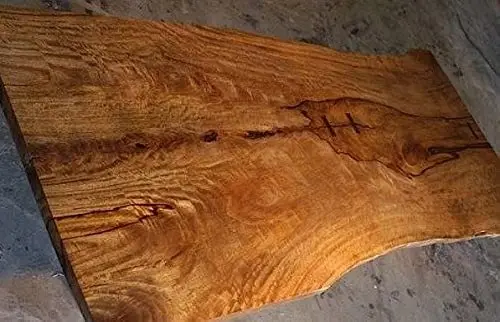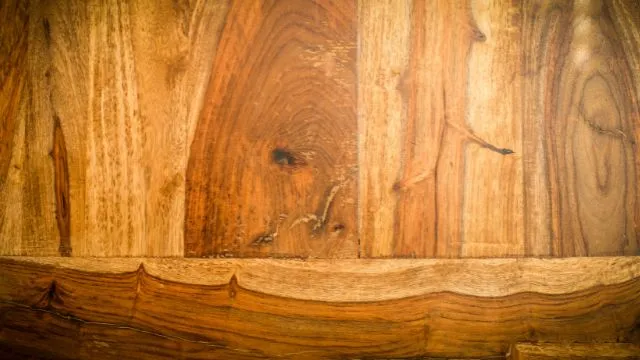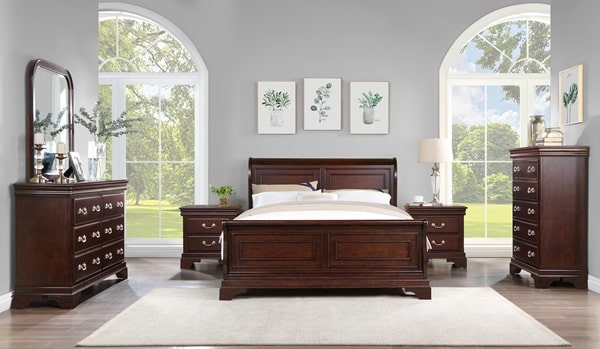When it comes to woodworking projects, there are literally so many varieties of wood to choose from. And that’s why, you can shape your project in whatever way you like, both literally and aesthetically. However, when it comes to the aesthetic appeal of furniture made out of Mango Wood and Sheesham Wood, people often get confused about which one should they pick. Absolutely both the wood choices are stunning, but there is certainly more to the aesthetic appeal or finishing of the wood. And that is where our today’s post comes into play, where we will be comparing both Mango wood and Sheesham wood, and presenting you with the possible pros and cons of both of these wood types. So yeah, let’s get down to it then. Shall we?
What is Mango Wood?
Let’s talk about Mango Wood! Yep, you heard it right, the wood from the same tree that gives us the juicy, sweet, and refreshing tropical fruit, the Mango. Scientifically known as Mangifera Indica, this tree is a native gem of the balmy regions of Asia and some patches of Oceania. While it’s famous for its delicious fruit, once the tree says goodbye to its fruit-bearing days, it serves another crucial purpose, becoming a source of wood. Often, this wood steps in as the understudy for our traditional biggies like maple and oak, boasting its own combo of strength and easy-to-handle characteristics.
Pros of Mango Wood
- First off, the sustainability aspect of Mango Wood is a significant plus. These trees are fast growers and essentially a spin-off of the food industry. This means you’re opting for an environmentally friendly choice, so yeah, for that just pat yourself on the back!
- Mango wood falls into the hardwood category, but the best part is that it’s soft enough to work with without needing any fancy equipment. This trait makes it a darling among furniture craftsmen.
- Let’s talk money. We’re all looking for a deal, right? Well, Mango Wood doesn’t disappoint. It’s more wallet-friendly compared to other hardwoods, making it a cost-effective pick for your projects.
- Lastly, mango wood brings its own flair to the table with distinct grain patterns. Also, it takes well to stain, allowing for various final product appearances. From rustic to sleek, you can achieve different looks quite easily!
Cons of Mango Wood
- The wood is a little sensitive, being prone to insect and fungal attacks. This means the lifespan and appearance of the furniture crafted from it could be compromised.
- Moreover, Mango wood doesn’t take too well to sunbathe. It’s not the best pick for outdoor furniture as exposure to the sun could lead to cracking and dehydration.
- Also, as much as we love it, Mango wood isn’t the strongest and most durable one out there. It’s not as strong as some other hardwoods which might cause it to warp over time.
- The high moisture content in Mango wood can cause it to expand and contract with weather changes. This could impact the stability of the furniture. So, it’s essential to consider the environment where you will be using Mango wood furniture.
What is Sheesham Wood?
Known popularly as Indian Rosewood, Sheesham wood is a product of the Dalbergia Sissoo tree. Found primarily in the Indian subcontinent, this special kind of wood has a strong reputation for its durability and unmatched aesthetic appeal. Just picture it, colors ranging from a soft golden brown to a rich, deep reddish shade, often intertwined with intricate dark streaks. It’s like an artist’s palette on wood, adding a dash of charm and elegance to your living space.
Pros of Sheesham Wood
- It’s incredibly durable, doesn’t bend or twist in response to humidity changes (a trait we call warp resistance), and laughs in the face of termites. If you’re looking for furniture that’s going to last for many years, maybe decades to come, this wood is the way to go!
- Its distinctive look makes it a firm favorite among those who love adding a dash of luxury to their homes.
- If you’re the type who loves the idea of stunning furniture but dreads the upkeep, Sheesham Wood is your perfect match. It’s not fussy and demands very little care compared to other types of wood.
- Sheesham trees can thrive even in the poorest of soils and the harshest of conditions. This makes them a renewable, sustainable source of wood that doesn’t compromise the health of our planet.
Cons of Sheesham Wood
- Although it’s a hardwood, Sheesham isn’t quite as flexible as its cousin, Mango wood. This means it might give your furniture maker a bit of a workout.
- Much like us, Sheesham wood changes as it gets older. Exposure to UV rays can darken the wood, altering the color and appearance of your furniture.
- There’s a little catch when it comes to sustainability. Despite the abundance and resilience of Sheesham trees, there’s a lack of certification from major organizations that oversee sustainable harvesting. If you’re an eco-warrior, this could be something to consider.
Final Take
There you have it. Now you know which wood to choose for your next woodworking project when the choice boils down to Mango wood and Sheesham wood. However, we’d still recommend you to make the final decision based on your needs, wallet size and the requirement of the project.



